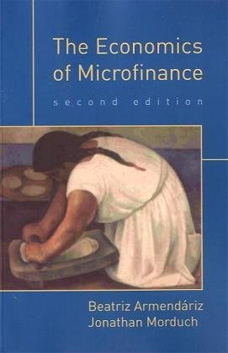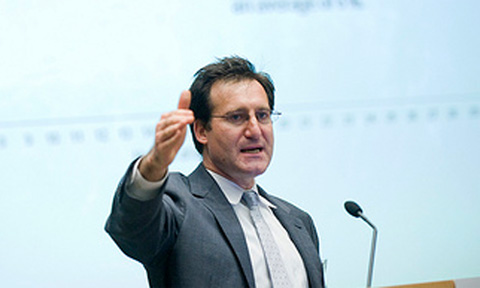About 40 percent of the planet lives on $2 a day or less. How is it even possible? How do families get through a typical week or a year?
Dr. Jonathan Morduch, Professor of Public Policy and Economics at New York University Wagner Graduate School of Public Service, shared lessons with Ohio University students from his detailed look at how families in South Africa, India, and Bangladesh manage to get though a year living on $2 a day per person or less.
Morduch visited a class on Oct. 17 taught by Dr. Julie Paxton, Associate Professor Economics, and he talked to an overflowing crowd in the Baker Ballroom that included Economics and International Studies students and faculty.
 Morduch co-authored book, Portfolios of the Poor: How the World’s Poor Live on $2 a Day, reveals unexpectedly active financial lives. Even very poor families are borrowing, saving, and coping with risk. Morduch describes new financial tools that can help them do much better.
Morduch co-authored book, Portfolios of the Poor: How the World’s Poor Live on $2 a Day, reveals unexpectedly active financial lives. Even very poor families are borrowing, saving, and coping with risk. Morduch describes new financial tools that can help them do much better.
“I really enjoyed the talk by Professor Morduch. Guest speakers are so helpful because everything theoretical that we are studying suddenly has a face to it, and so you start understanding that these are real people who have done actual work and research and applied all these textbook concepts to the real world,” said student Sana Mahmud.
“In Professor Morduch’s case I think our Economics of Poverty class particularly enjoyed the session because we had read his work and articles, and so we felt more in sync with what he was saying,” added Mahmud. “When you read someone’s work and you enjoy it, what better way to appreciate it than by having the chance to discuss it with the author himself. “
How Microfinance Really Works
Microfinance presents a way to tap the power of the market to reduce poverty, both abroad and in the United States. The idea emerged from South Asia and Latin America in the 1980s and has swept the world—even being recognized by a Nobel Peace Prize, notes Paxton. But does it really work? And are there better solutions?
 Morduch also co-authored the book, The Economics of Microfinance. He shared lessons from recent research and new ideas being tried around the world with the OHIO audience.
Morduch also co-authored the book, The Economics of Microfinance. He shared lessons from recent research and new ideas being tried around the world with the OHIO audience.
“I was really impressed and moved by the presentation of Professor Morduch this morning. His message and findings really rang true in my mind from my past experience in my country,” said student Sophyrum Heng, who is from Cambodia. “I am really glad that you could bring him to interact with us. I’m so inspired by the Microfinance approach and might do it as my thesis in Southeast Asia.”
Morduch’s work focuses on innovations that expand the frontiers of finance and how financial markets shape economic growth and inequality. He has lived and worked in Asia, but his newest study follows families in California, Mississippi, Ohio, Kentucky and New York as they cope with economic ups and downs over a year. This new study jumps off from ideas in Portfolios of the Poor.




















Comments